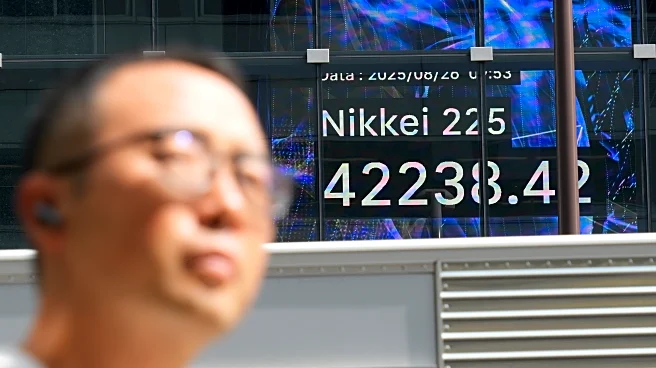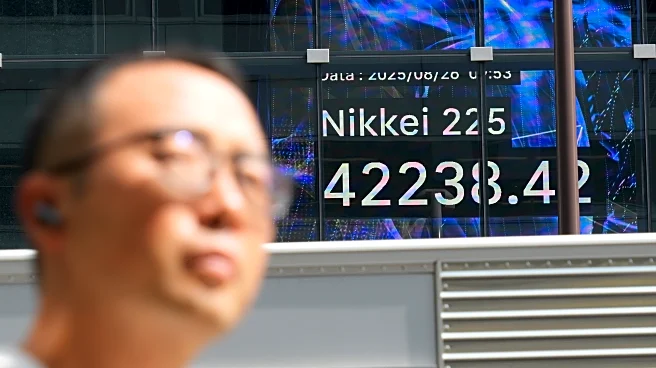What's Happening?
The U.S. has intensified export controls on advanced semiconductor technologies to China, impacting AI chips and manufacturing tools. This strategic move, mirrored by Japan, the Netherlands, and South Korea, has significantly hindered China's ability to produce high-end chips at scale. Semiconductor Manufacturing International Corporation (SMIC), China's largest foundry, has been unable to acquire essential EUV machines from ASML, limiting its production capabilities. As a result, companies like Huawei have resorted to stockpiling U.S. chips or smuggling them to maintain operations. The U.S. strategy has fragmented the global semiconductor market, with TSMC now dominating high-end AI chip production. Meanwhile, China's retaliatory tariffs and rare-earth controls have deepened geopolitical tensions, creating a vacuum that Chinese firms are eager to fill.
Why It's Important?
The U.S. export controls have forced China to pivot towards self-sufficiency in semiconductor production, reshaping AI supply chains. This geopolitical friction has inadvertently created opportunities for Chinese semiconductor firms to grow and innovate. Companies like Cambricon, Hygon, and SMIC are leveraging policy support and strategic partnerships to scale production and capture market share. The Chinese government's 'Made in China 2025' initiative has funneled significant resources into R&D and infrastructure, driving demand for domestic alternatives despite performance gaps. This shift presents potential alpha opportunities for investors, as Chinese firms adapt to geopolitical headwinds and aim to compete with U.S. leaders like Nvidia.
What's Next?
China's semiconductor industry is expected to continue its push for self-sufficiency, with firms like SMIC planning to double their manufacturing capacity by 2026. The geopolitical tensions may escalate further, impacting global supply chains and market dynamics. Investors will need to balance optimism with caution, as the performance gap between Chinese and U.S. chips persists. The long-term trajectory suggests that China's semiconductor industry will continue to adapt and grow, offering potential investment opportunities for those willing to navigate the volatility.
Beyond the Headlines
The geopolitical tensions surrounding semiconductor production have broader implications for global technology supply chains and international relations. China's drive for self-sufficiency in AI chips reflects a strategic shift towards reducing dependency on foreign technologies, which could lead to long-term shifts in global tech leadership. The ethical and legal dimensions of export controls and retaliatory measures may also influence future policy decisions and international trade agreements.













